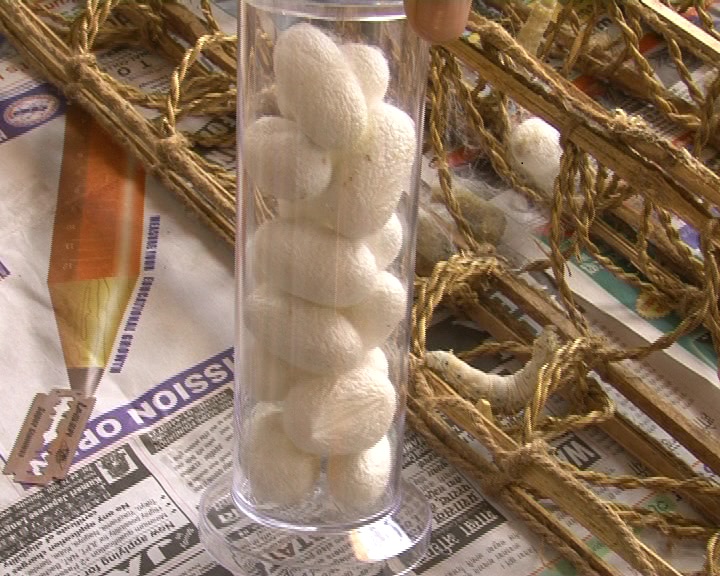Graphene Eating Silkworms Can Spin for Wearable Electronics
05-04-2018 | By Rob Coppinger
For thousands of years, animals and plants have been used for clothing, from cotton to wool, to silk from silkworms. In the 20th and 21st centuries, other methods, such as genetic engineering and novel foods, have turned creatures’ bodily processes into factories for drugs or other useful materials. Sheep and goats have produced medicines in their milk, while bacteria have produced alcohol-based biofuels by consuming carbon dioxide. And now, graphene fed silkworms will produce conductive silk that allows integrated circuits to be woven into a fabric.
The graphene-infused silk could be used for wearable devices, such as a maternity dress that provides doctors with baby and mother health updates. The graphene silk’s conductive properties replace the wiring that the wearable sensors would need while also strengthening the silkworm-made material. Graphene, a form of carbon, is deemed a wonder material because, in its pure form, it is many times stronger than steel while also being lightweight, flexible and highly electrically and thermally conductive.
After munching on mulberry leaves for up to 33-days, Silkworms produce a one-kilometre long strand of silk that they wind into the cocoon in which they will transform into a moth. Two weeks after spinning the cocoon, the adult moth emerges, and the one-kilometre of carbon enhanced silk can be harvested. The adult moth will only live for 10 days more to mate with a female. Entomologists do not think graphene harms the silkworm during its life cycle. The graphene food begins as nano graphene platelets, and combined with a chemical and deionised water, it is put through a centrifuge to create a liquid food. That liquid is then sprayed onto the mulberry leaves.

By Krish Dulal - Own work, CC BY-SA 3.0, Link
When the silk is harvested, it is treated chemically, then heated and spun into the thread used to make clothes. Spinning is known to strengthen silk, and researchers hope that graphene will enhance this strength further. In a collaboration between the UK and Chinese universities, silkworms are to be fed graphene food of different concentrations over the next six months to analyse the resulting silk for its properties. The silk thread will also be assessed to create a material data sheet, so researchers can develop other possible applications. How biodegradable the silk is will also be evaluated in further testing.
While spiders have been fed graphene to modify their silk, arachnids cannot be raised in large numbers because they eat each other. Cocoons are also easier to harvest than spider webs. The UK, Chinese collaboration is between Imperial College London (ICL) and Tsinghua University in Beijing. A team of five postgraduate students funded by ICL’s Advanced Hackspace, a research incubator, are developing the super silk.
Discussing the material with the obstetrics and gynaecology community, the team came up with the idea of maternity clothing that could monitor the baby’s movements, the mother’s blood pressure and possible contractions. “[Women] could wear something from the first trimester, so if something does happen [during the pregnancy], they don’t ignore the initial warning signs,” said ICL team member Thea Peterson.
Looking for potential commercial partners, the team have already decided they need an existing silkworm farm to mass-produce the graphene silkworms infused thread.
Read about how graphene could revolutionise the car industry: Graphene can help electric vehicles clean up their dirty act?
